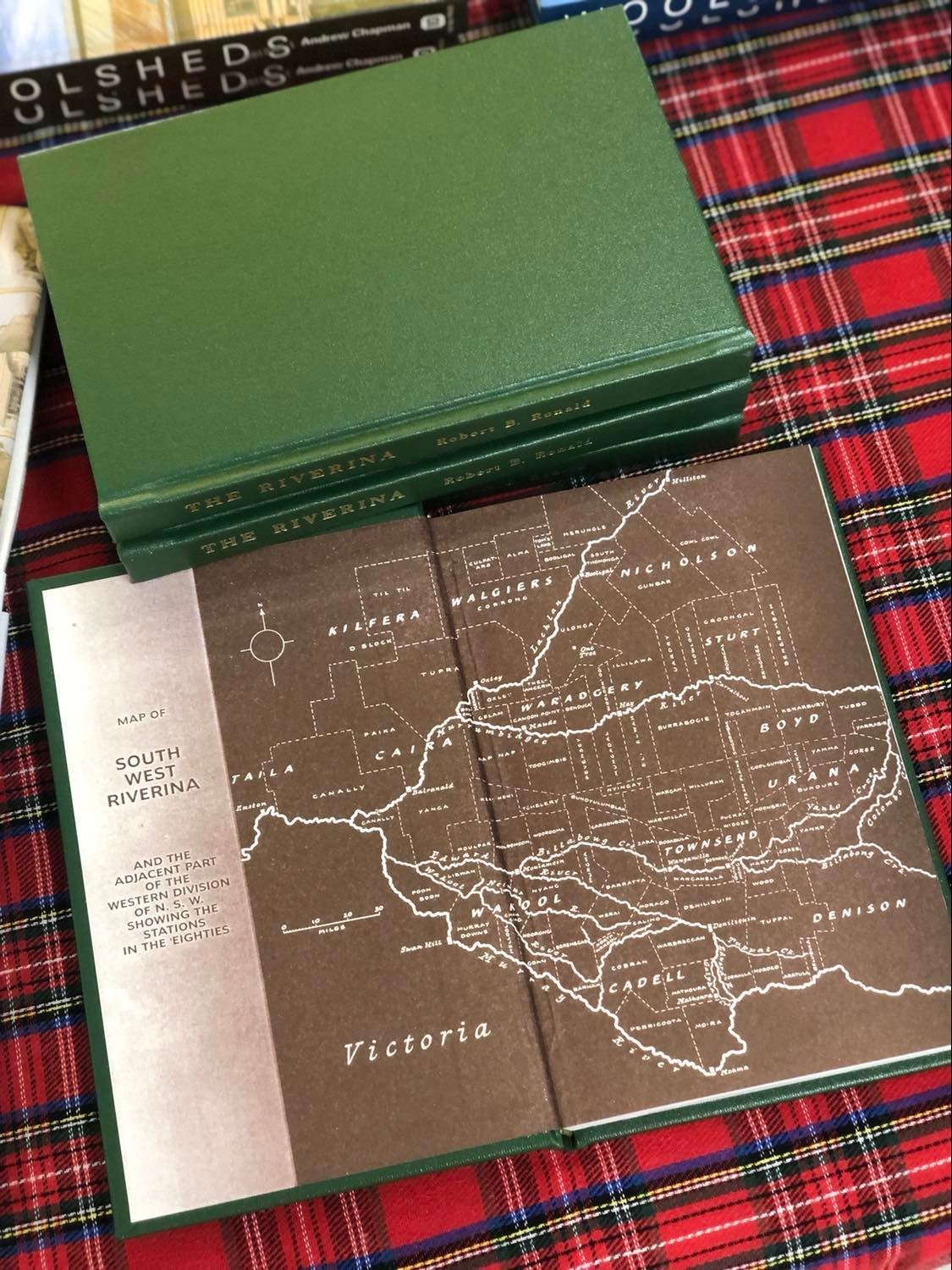The Riverina - People and Places - the important historical record by Robert B Ronald
By Krista Schade
Robert Ronald’s work “The Riverina - People and Places” is an important record of the settlement of the region around Hay. It was first printed in Melbourne in 1960 by EW Cheshire Pty Ltd. Robert’s younger brother agreed to underwrite the printing costs, after publishers showed little interest in the tome, however the first print run of 1000 copies quickly sold out, and a second print run was organised
Almost fifty years later Robert’s sons Wilson and Hugh worked with The Riverine Grazier’s Rod McCully to reproduce the book in 2004, with the inclusion of a forward, penned by the brothers.
In the book, Robert writes about explorers Oxley, Throsby, Currie and Ovens, Hume and Hovell, Mitchell and Charles Sturt, and records the early settlements along the Lachlan, Murrumbidgee, Edward and Murray Rivers and the Yanko Creek.
He wrote about pioneer families such as the Tysons and the Langs, and iconically Australian companies such as Cobb and Co. He also penned chapters on many important stations that emerged at the time: Nap Nap, Steam Plains, Caroonboon, Yanko and Culpataro to name but a few. More than 200 regional properties are listed in the index of the book, and and even greater number of individuals, who helped shape the district.
The collection of history and photographs is so highly regarded that first edition copies of the 1960 edition sell in excess of $500.
The Australian Dictionary of Biography offers the following summary of Robert Ronald’s life.
“Robert Bruce (Bob) Ronald (1888-1956), grazier and soldier, was born on May 5, 1888 at Elsternwick, Melbourne, son of Robert Wilson Ronald, a Victorian-born grazier, and his wife Veronica Jane, née McGeorge, who came from England. Bob began his education in England before returning to Victoria, where he was sent to Geelong Church of England Grammar School and Dookie Agricultural College (Dip.Ag., 1907). He gained pastoral experience with the Australian Mercantile, Land & Finance Co. Ltd on Angledool (overseer 1910-12) and Charlton stations in northern New South Wales, then returned to Nap Nap, the family property and merino stud (Flock No.66) west of Hay.
On 26 September 1914 Bob and his younger brother Kenneth enlisted in the Australian Imperial Force. Both left Australia as troopers in the 6th Light Horse Regiment and reached Gallipoli in May 1915; Bob was wounded and evacuated in June; Kenneth was killed there one month later. Bob Ronald served with his regiment in the Sinai and Palestine. He was commissioned in September 1916 and promoted lieutenant in December. In November 1917 he was wounded in the left eye, arm, thigh and ankle; he was awarded (1918) the Military Cross for his 'conspicuous gallantry and devotion to duty'. Unfit for service, he returned to Australia in February 1918 and was discharged from the army on 3 August. He joined his father, brother Ian and sister Mrs S. C. McKehnie in running Nap Nap (42,000 acres, 16,997 ha) as a family company, R. W. Ronald & Co.
At St Stephen's Presbyterian Church, Caulfield, Melbourne, on 23 April 1930 he married 24-year-old Gaie Chrisp.
Ronald was a member of the Royal Australian Historical Society and a contributor to its Journal and Proceedings. Like his father, he was interested in the history of land settlement in the Riverina. Assisted by his father's investigations in the Mitchell Library, Sydney, he carried out extensive research in Sydney, Melbourne and the Riverina. He drew on official records, contemporary books, maps and newspapers, and published a number of articles in the Riverina Recorder (Balranald) and the Riverine Grazier (Hay).
A series in the latter in 1929 was reprinted—with changes—in the Pastoral Review (February 1930-September 1931); five pieces on the 'Saltbush Plains of Western Riverina' appeared in 1934. These articles formed the basis of his authoritative reference work, The Riverina: People and Properties, which he had begun in 1939 during 'enforced idleness following an accident' and which he dedicated to the pioneers who had 'explored and occupied the land'.
According to a friend, Ronald 'suffered from all that war means', but never complained. He was a member (1925-53) of Waradgery Shire Council and of the Graziers' Association of Southern Riverina, and was active in the development of flood control on the lower Murrumbidgee. (Selfless service meant that he finished up with the worst road in the shire). Well liked by all, he gave generously of his time and money to sporting, cultural and charitable organizations, especially in the Maude district. He belonged to the Australian and the Imperial Service clubs (Sydney) and the Waradgery Club (Hay). Survived by his wife and their two sons, he died of a coronary occlusion on 1 December 1956 at Hay and was buried in the local cemetery.”
The Riverine Grazier has hard cover copies of The Riverine - People and Properties on sale for $55 per copy (plus postage if necessary).



